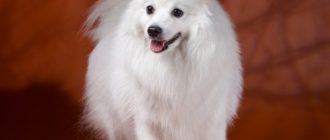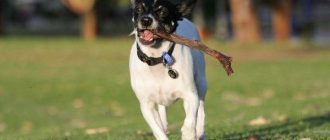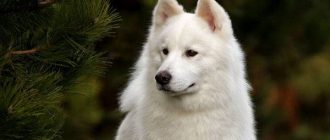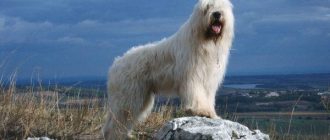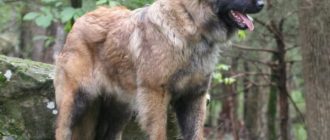
Classification
Origin: Canada
Class: FCI classification – 2nd group (Pinschers, Schnauzers, Molossians and Swiss Mountain Dogs. Section 2.2 Molossoid dogs, mountain dogs)
Usage: sled dog for transportation heavy loads. Water dog.
Color: black, black and white, brown
Sizes: growth at the withers: males – from 69 to 74 cm, females – from 63 to 69 cm; weight: males – up to 68 kg, females – up to 54 kg
Life span: 8-10 years
Adult Newfoundland – a large beautiful dog, charming bear in a luxurious fur coat.
This is a patient and loving dog, calm and obedient, with unique grace always holding with extreme aristocracy and dignity, a true canine gentleman tribe.
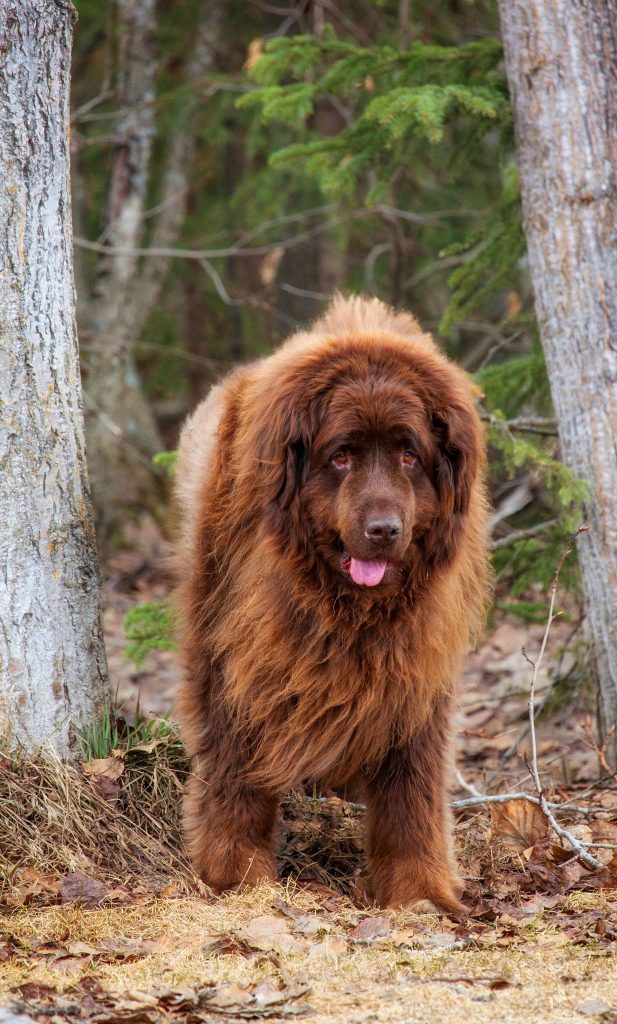
Incredibly hardy and strong dog, quite capable of put the enemy on the shoulder blades, Newfoundland less devoid of any aggression towards people and others to animals
Content
- 1 Breed History
- 2 Character and Psychology
- 3 Application
- 4 How to choose a puppy
- 5 Care features
- 5.1 Combing
- 5.2 Walk
- 5.3 Feeding
- 6 Health
- 6.1 Characteristic diseases
- 6.2 Vaccinations
- 7 Knit
Breed history
Contents
The birthplace of the dog is Newfoundland Island. But the origin itself Newfoundlands still cause a lot of controversy.
Among his ancestors are called white bear dogs, which got here with the Vikings, and Tibetan mastiffs.
A plausible version is that Newfoundlands are a fruit crossbreeding primary aboriginal dogs with numerous European breeds that fell into the island together with travelers – Neapolitan Mastiffs, Molossians, portuguese water, black scottish shepherd dogs and other things.
Well, the harsh northern climate of the Arctic made harsh the breeder.
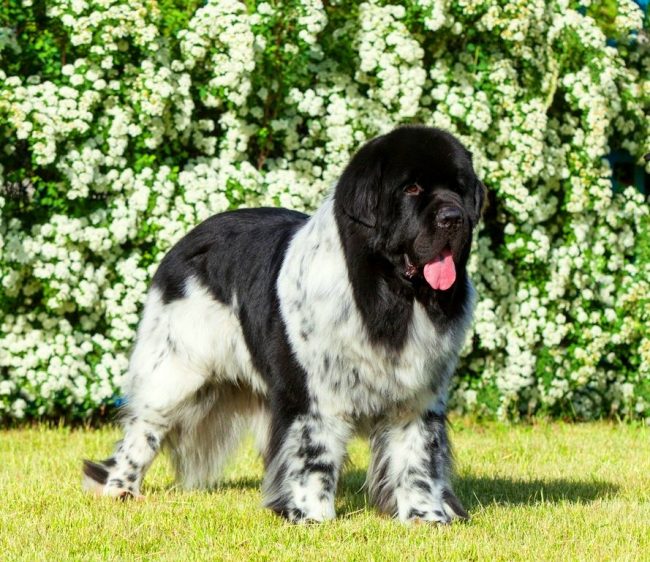
Newf will just ignore the meaningless command or execute in his own way
Character and Psychology
Devotion, kindness, amazing character, mind, friendliness and expressive look – Newfoundlands bribe their special character:
- lack of aggression – nature created them as an assistant a man who like great swiss and Bernese Mountain Dog lives and works next to him. They won’t make a good watchman – they’re too good-natured, but immediately come to the rescue, natural heroism is one of main features in their character. They are non-conflict, easily get along with other animals in the house, even acting as a guardian
- Monogamous – as a puppy, Newfoundland becomes attached to his the owner, although more precisely – to the family where he lives. it attachment – for life, they are very hard going through a shift owners, in a new family can just become isolated
- love for children – as is the case with bullmastiff and beauceron, kids can do with newf almost everything, such patience can only be envied.
- socialization – they need communication, people, they are used to living near with them. They are not afraid of the city, trips and crowds.
- curiosity – newfies are not afraid of transport – for them it is interesting and informative, this adventure, they will always stick their nose to where there is something new
- poise – they may seem inactive, even lazy, lethargic or phlegmatic. But exactly until the moment when there is a threat to the owner – they immediately turn into a swift, fulminant muscle lump
- intelligence is a very, very smart dog with a grand memory, easy to learn and train. At the same time, she often makes the decision herself what to do best, sometimes even ignoring the owner’s orders

Newfoundland prefers the role of a gentle and caring nanny and rescuer, taking under his care any living creature that fell into field of vision
Application
Newfs are born rescuers, they swim great, pulling out victim ashore, not afraid to jump into the water from a boat, sail to drowning with a life buoy.
Strong dogs, they can easily tow a boat in the north they are actively used to transport heavy loads on a sleigh.
But still their main purpose is a companion dog, a friend for the whole family.

Newfoundland is, above all, a rescue dog, accustomed to make decisions and act independently in critical situations
How to choose a puppy
A good puppy, like a little mountain dog, agile, sociable, has a good appetite.
In addition, he has a shiny coat, no rashes, clean ears and eyes, a wet nose and a soft stomach.
An important indicator of the exterior is massive paws.
In addition, Newfoundlands require attention, the protruding tail as a rudder when swimming – it should be wide at grounds.
Signs of marriage – excessive aggressiveness, smoothness, malocclusion, non-standard color (any spots except white).
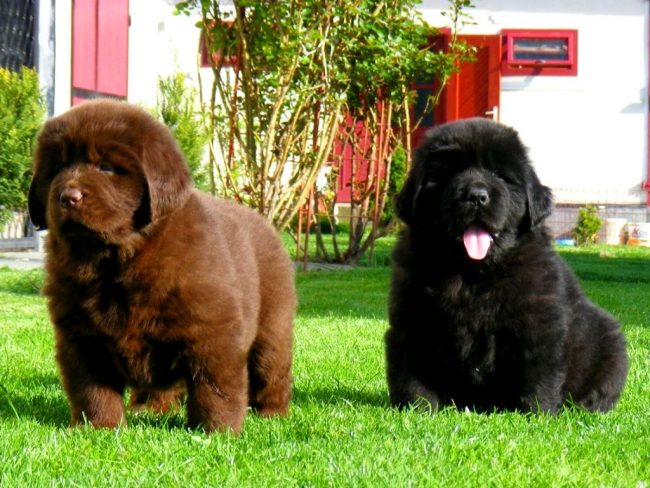
Из таких “пушистых комочков” ньюфаундленда вырастут верные членысемьи и надёжные спасатели
Care Features
Combing
Newfoundland wool requires regular grooming.
To protect against tangling, soft and thick undercoat, it is necessary to comb the hair 3-4 times a week.
This will require a massager glove and furminator.
Koltuny (felted wool) can ruin a dog’s life – they cause itching and hurt the skin.
It’s better to try to unravel them, cut dense woolen balls are necessary in extreme, completely neglected cases.
Newfoundlands molt abundantly throughout the year, but twice in the fall and in the spring – they completely drop the undercoat, the amount “creeping out” undercoat strikes with considerable volumes – a dog have to comb daily.
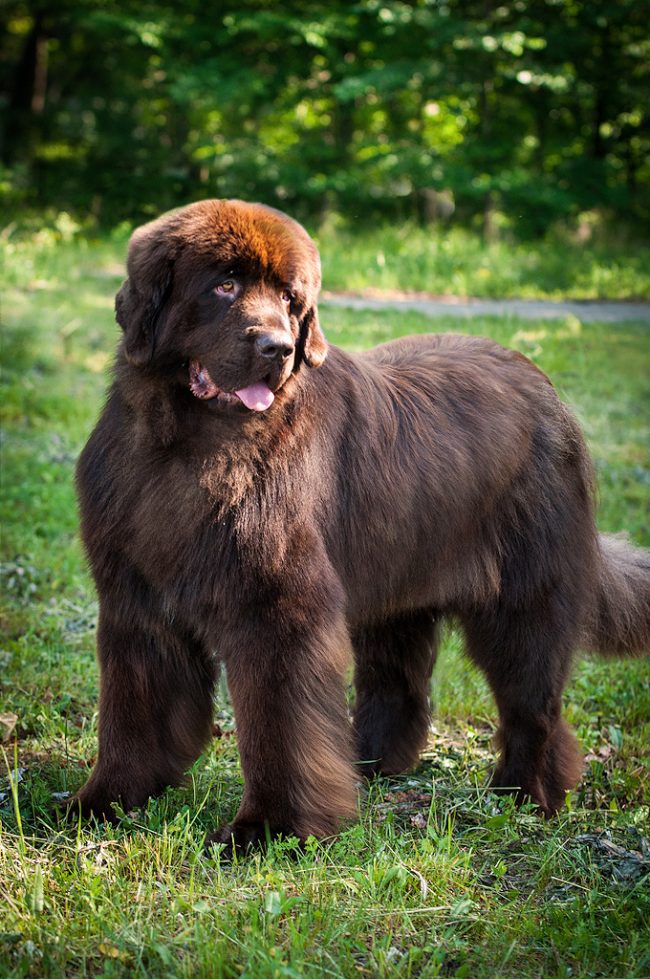
To keep Newfoundland’s fur as smooth and impeccable, do not forget about regular combing of the pet with a hard brush
Newfoundland wool is coated with natural lubricant, its composition Helps repel water and dirt.
Therefore, these dogs themselves are clean and do not require frequent swimming.
On the contrary, too frequent water procedures (with using special shampoos and other chemicals) negatively affects the dog’s coat – it becomes thinner and the glands stop emit natural lubricant.
Claws are sheared once or twice a month, as needed.
Caring for your ears and eyes is easy – just check them for the presence of discharge (this is a sure sign of infectious diseases) and wipe with a slightly damp cloth.
Walking
Newfoundlands – extremely calm, prone to passive, a measured way of life.
About other dog breeds that are not very active, can learn from articleshttps: //kot-pes.com/10-porod-sobak-dlya-lenivyx-xozyaev/
Given the breed’s tendency to be overweight, Newfoundland requires systematic physical activity – this will help to avoid obesity and related health complications.
Therefore, you need to walk them at least twice a day – in the morning and in the evening.
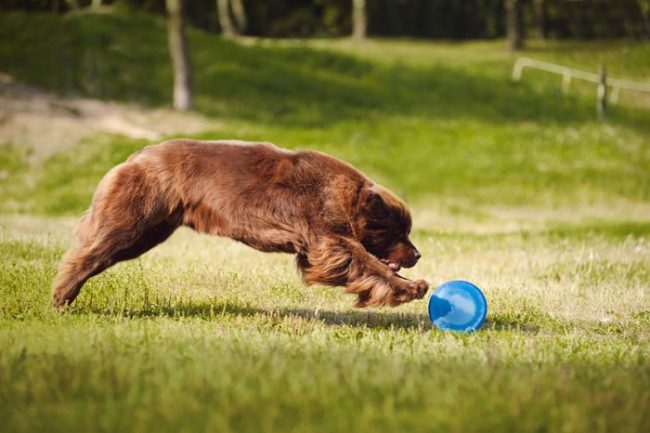
Newfoundland is always against playing, fun to run and jump
For such a large and heavy dog, it is preferable to slow and long run or just active walks.
Hyperactive activities such as agility Newfoundland is not suitable.
They can run in the company of other dogs, but it costs them briefly afford – they will immediately find a suitable place, to lie down.
They can move a little energetically with children, but than get older, the more passive they behave.
However, with all this, they are real fans of swimming, if nearby there is a reservoir (river, lake, even a pool) – the dog will immediately go to swim.
Feeding
Puppies (8-10 weeks) are fed 4 times a day (breakfast, second breakfast, dinner and before bedtime) – half a cup (115 g) of special, for puppies, dry food, diluted with 15 g distilled warm water.
If you notice that the puppy is gaining excess weight, a serving can cut a little.
A grown up dog (from 10 weeks to 3 months) is fed at least 3 times per day (breakfast, lunch, dinner) – one and a half (345 g) cups dry puppy food with 45 g distilled warm water.
An adult newf is fed 2 times a day, the daily norm is up to 1 kg dry food, but serving may vary depending on activity and weight of the dog.

Feeds formulated specifically for Newfoundland, but when choosing natural nutrition should consider the following:
- meat should be 40-50% of the dog’s diet, preference should be given to veal, beef, lamb or rabbit meat, not recommended pork and poultry
- offal – liver and beef heart
- cereals – oatmeal and buckwheat, but the content of potatoes and rice should be minimized
- once a week you need to give sea fish (raw or boiled), and here is the river – only boiled
- necessarily cottage cheese, 150 g will replace 100 meat
- natural oils can be added to food – this is good for thick dog hair
- from vegetables – cabbage, including sauerkraut, carrots, a little beets
- greens – parsley, nettle, dill, salad. Before serving scald with boiling water
- bread – only in the form of crackers
- nothing hot, smoked, as well as sweets and chocolate
Health
Characteristic diseases
As with other massive, large rocks, a weak spot Newfoundlands – musculoskeletal system, arthritis and hip dysplasia.
Lack of mobility leads to dog obesity and disease hearts. Other common health problems:
- eye diseases – cataract, eyelid inversion (entropion), eversion of the century (ectropion)
- intestinal inversion (bloating)
- hypothyroidism
- aortic stenosis
- ectopia of the ureters
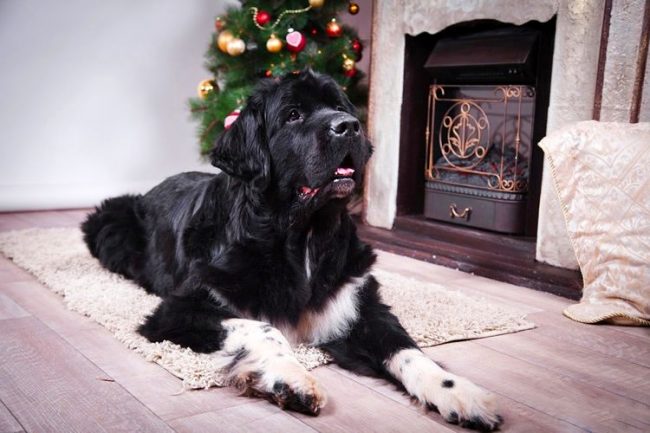
Newfoundland is a companion dog and is vital for him. be near a person
Like any northern dog, Newfoundlands do not tolerate heat, can easily get heat stroke.
At this time, they should be bathed more often, they should always have in a bowl of water.
Useful information on how to properly water a dog can be find here: https: //kot-pes.com/kak-pravilno-poit-sobaku/
The main signs of heat stroke are lethargy, a dry, warm nose, loss of appetite.
The temperature of a healthy dog is within 38-39 degrees.
Vaccinations
The first time a dog is vaccinated at 9 weeks, repeatedly – at 12 weeks.
Adults are vaccinated once a year, it is better to withstand interval, approximately at the same time.
10 days before the vaccination, worm preparations are given. All vaccinations must be recorded in the passport.
Thanks to thick hair, membranes between fingers and love for swimming – Newfoundland is sometimes called a “diver”
Knitting
The standard defines three types of Newfoundland color – brown, black and black and white.
So when choosing a partner for mating, you should choose a dog appropriate color.
Important: black and white Newfoundlands cannot be knit with browns.
Newfas love talking to people and other dogs.
Since the black color is dominant in relation to others, black homozygous dogs are suitable for mating with individuals other colors.
You can look at the most unusual colors of dogs in articlehttps: //kot-pes.com/neobychnyy-okras-sobak/
Problems can occur in heterozygous black dogs, received from parents with different colors.
In this case, Newfoundland must be knitted exclusively with black by individuals.
As an option – with newfies of this color, if they have recessive gene.
Newfoundland dog breed – a true friend and a brave lifeguard: description, character, care
Adult Newfoundland – a large beautiful dog, charming bear in a luxurious fur coat.
Dubrov Bogdan6 Overall result CharacteristicAggression2Adaptability8Activity4Weight10 Training6Friendliness10Playability4Intelligence10 Noise2 Add your review | Read reviews and comments


